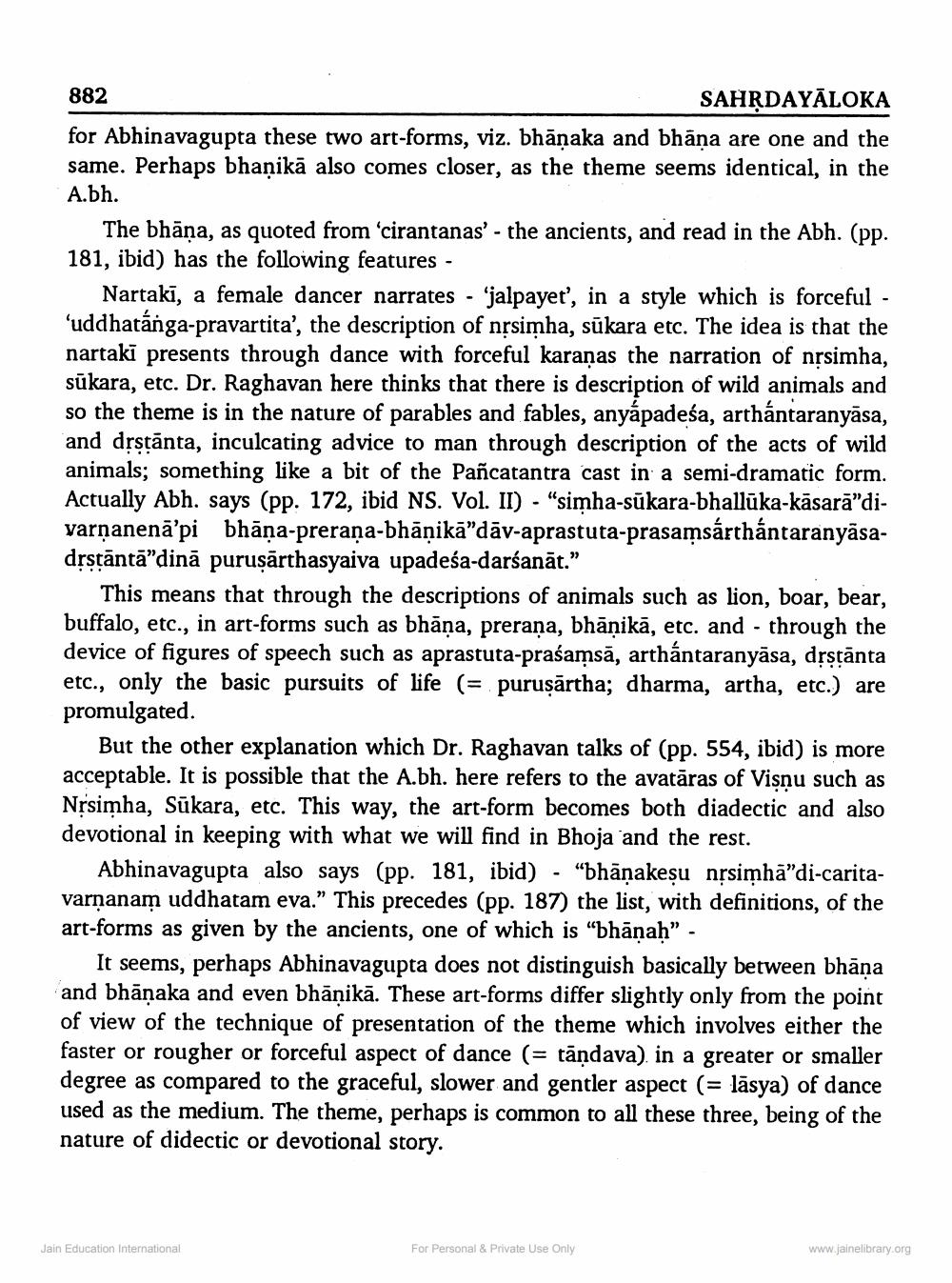________________
882
SAHṚDAYĀLOKA
for Abhinavagupta these two art-forms, viz. bhāṇaka and bhāna are one and the same. Perhaps bhaṇikā also comes closer, as the theme seems identical, in the A.bh.
The bhāṇa, as quoted from 'cirantanas' - the ancients, and read in the Abh. (pp. 181, ibid) has the following features
Nartaki, a female dancer narrates - 'jalpayet', in a style which is forceful 'uddhatanga-pravartita', the description of nṛsimha, sūkara etc. The idea is that the nartaki presents through dance with forceful karaṇas the narration of nṛsimha, sūkara, etc. Dr. Raghavan here thinks that there is description of wild animals and so the theme is in the nature of parables and fables, anyápadeśa, arthántaranyāsa, and dṛṣṭānta, inculcating advice to man through description of the acts of wild animals; something like a bit of the Pañcatantra cast in a semi-dramatic form. Actually Abh. says (pp. 172, ibid NS. Vol. II) - "simha-sukara-bhalluka-kāsarā"divarṇanenā'pi bhāṇa-preraṇa-bhāṇikā”dāv-aprastuta-prasamsárthántaranyāsadṛṣṭāntā"dinā puruṣārthasyaiva upadeśa-darśanat."
This means that through the descriptions of animals such as lion, boar, bear, buffalo, etc., in art-forms such as bhāṇa, preraṇa, bhāņikā, etc. and through the device of figures of speech such as aprastuta-praśamsā, arthántaranyasa, dṛṣṭānta etc., only the basic pursuits of life (= puruṣārtha; dharma, artha, etc.) are promulgated.
But the other explanation which Dr. Raghavan talks of (pp. 554, ibid) is more acceptable. It is possible that the A.bh. here refers to the avatāras of Viṣṇu such as Nrsimha, Sūkara, etc. This way, the art-form becomes both diadectic and also devotional in keeping with what we will find in Bhoja and the rest.
-
Abhinavagupta also says (pp. 181, ibid) "bhāṇakeṣu nṛsimha❞di-caritavarṇanam uddhatam eva." This precedes (pp. 187) the list, with definitions, of the art-forms as given by the ancients, one of which is "bhāṇaḥ" -
It seems, perhaps Abhinavagupta does not distinguish basically between bhāṇa and bhāṇaka and even bhāṇikā. These art-forms differ slightly only from the point of view of the technique of presentation of the theme which involves either the faster or rougher or forceful aspect of dance (= tandava) in a greater or smaller degree as compared to the graceful, slower and gentler aspect (= läsya) of dance used as the medium. The theme, perhaps is common to all these three, being of the nature of didectic or devotional story.
Jain Education International
For Personal & Private Use Only
www.jainelibrary.org




